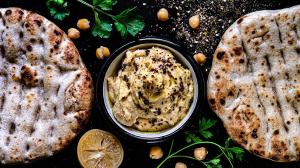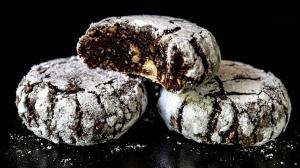It’s getting colder out there, folks are still staying home a lot and inviting friends over more often and hummus is often served, being one of the most popular Mediterranean and Middle Eastern appetizer and accompaniment around the world today … Here’s a better way to make it and an easier way to remember how to make it more often !
Traditional hummus, as we know it with chickpeas and sesame paste is actually called “hummus bi tahina”. Many countries in the regions of the Near East, East Mediterranean, North Africa and Western Asia enjoy it daily but historically speaking, hummus is most probably from any of the countries in the region that was referred to as the Levant which included Palestine, Israel, Lebanon, Jordan and Syria and is often more broadly extended to include Egypt, Greece, Turkey and Cyprus as well as Iraq and Libya.
Hummus has always been prepared with a chickpea purée to which is added a sesame seed paste, lemon and some olive oil. In the past salt-preserved lemons were used with part of the preserving liquid added in, but today, fresh lemons are used for their juice and some zest. Later on, garlic was added, as well as cumin and often some fresh parsley.
I tried to develop the recipe further, like everybody does in fact, because everyone I know has their own recipe. Today, many versions or hummus exist depending on the additions, from dark red beets to roasted red peppers to green and white scallions as I published a long time ago (see my recipe here), etcetera, but I’m sticking to a traditional version here.
I tried to imagine my updated traditional and more intense and joyous version while wondering how it was possibly prepared in the past but taking into consideration the ingredients and tools we so easily have access to today.
My favorite recipe is made up of 2 equal parts. The first part (or 50% of the total mixture) is the cooked chickpea purée which is made without the chickpea skins for a smoother result and the chickpeas, even though pre-cooked are further simmered in their liquid and some added water and flavored with just a hint of carrot, celery, onion, garlic and bay leaves.
The second part is equal in volume to the first part and made up of 3 equal parts (or 15% each of the total mixture) of lemon juice, tahini and olive oil, to which I add the preserved lemon, more crushed fresh garlic, some smoked salt, white and green peppercorns, coriander seeds and of course cumin seeds, that I grind on the spot and some fresh parsley and coriander leaves (which represents the remaining 5% of the total mixture).
And when both parts are ready, the first and second parts are blended together and tasted and adjusted if necessary, because even when using the same ingredients, every ingredient you will use is always slightly different each time, sometimes not intense enough or perhaps too intense.
And just before serving, a light drizzle of olive oil and a sprinkling of sumac, which is dark red and slightly sour (and which I prefer to paprika for this hummus) but a sprinkling of some za’atar is also quite nice.
Have a great weekend and invite your friends over soon … :)








